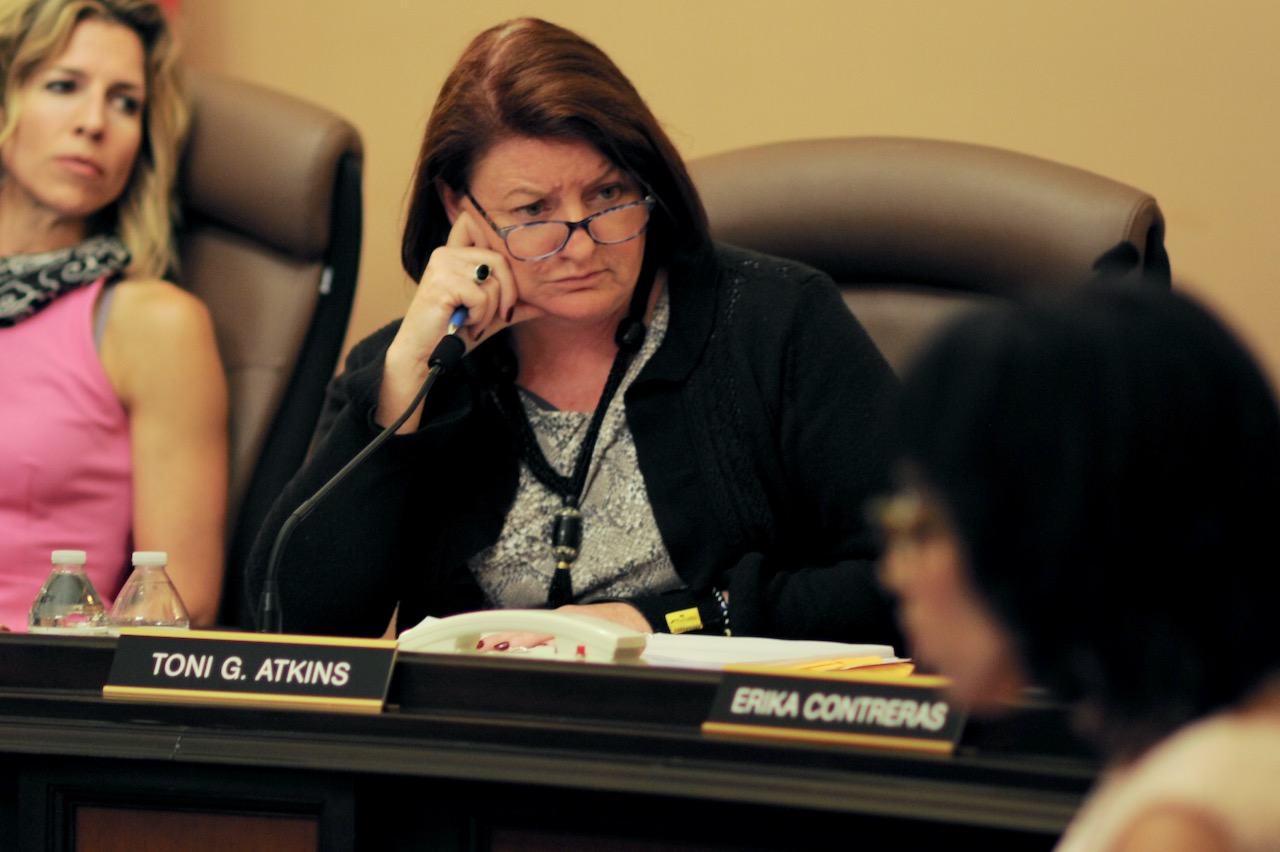
Journals of the California Legislature. (Photo: Wikipedia)
Bills on Consent – What Qualifies?
A bill on the Consent Calendar is not debatable
By Chris Micheli, March 18, 2020 2:50 am
Bills considered in the California Legislature without controversy are placed on the “consent calendar,” which means that the bill does not have to be presented by its author or debated by legislators. All bills on the consent calendar are dispensed with by one single vote of the committee or the full house in the Assembly or Senate.
As used in the Joint Rules of the Assembly and Senate, an “uncontested bill” means a bill that:
(a) Receives a do-pass or do-pass-as-amended recommendation from the committee to which it is referred, by unanimous vote of the members present provided a quorum is present,
(b) Has no opposition expressed by any person present at the committee meeting with respect to the final version of the bill as approved by the committee, and
(c) Prior to final action by the committee, has been requested by the author to be placed on the Consent Calendar.
As a result, the basic requirements for a bill to be placed on the consent calendar for either the Assembly or the Senate are:
- The bill cannot be a revenue measure nor a bill upon which the 30-day constitutional waiting period has been dispensed with;
- The bill must receive a “do pass” or a “do pass, as amended” recommendation by a unanimous vote of the committee members present; and
- The bill, in its final version as approved by the committee, cannot have had any opposition expressed to it by anyone present at the committee meeting.
Under the Joint Rules, each standing committee may report an uncontested bill out of committee with the recommendation that it be placed on the Consent Calendar of the respective house. The Secretary of the Senate and the Chief Clerk of the Assembly provide to each committee chairperson appropriate forms for that report of bills recommended for consent.
If the chairperson of a committee or subcommittee, in advance of a hearing, proposes to recommend any bills for consideration on the Consent Calendar without hearing testimony on those bills in committee, a list of those bills shall be made available to the public at the same time as the committee analysis required under the rules.
If a Senate bill or Assembly bill is amended in the Senate to rewrite the bill, a standing committee may not place the bill on its consent calendar, and may not report the bill out of committee with the recommendation that it be placed on the consent calendar on the floor.
On the Floors of the Senate and Assembly, the bill is then read a second time, the committee amendments, if any, are adopted and the bill is placed upon the consent calendar by the Chief Clerk of the Assembly or the Secretary of the Senate.
Consent calendar bills are considered on the second legislative day following the day of the bill’s placement on the consent calendar. If any Member of either house objects to a bill on the consent calendar at any time before its final passage, the bill is returned to the third reading file to be presented by the bill’s author.
Following its second reading and the adoption of any committee amendments, any bill certified by the committee chairperson as an uncontested bill shall be placed by the Secretary of the Senate or the Chief Clerk of the Assembly on the Consent Calendar, and shall be known as a “Consent Calendar bill.”
Any Consent Calendar bill that is amended from the floor shall cease to be a Consent Calendar bill and shall be returned to the Third Reading File. Upon objection of any Member to the placement or retention of any bill on the Consent Calendar, the bill shall cease to be a Consent Calendar bill and shall be returned to the Third Reading File.
A bill on the Consent Calendar is not debatable, except that the Senate pro Tem or the Speaker of the Assembly shall allow a reasonable time for questions from the floor and shall permit a proponent of the bill to answer the questions.
Immediately prior to voting on the first bill on the Consent Calendar, the Senate pro Tem or the Assembly Speaker shall call to the attention of the Members the fact that the next rollcall will be the rollcall on the first bill on the Consent Calendar. The Consent Calendar shall be considered as the last order of business on the Daily File.
On the Assembly Floor, standing committees are responsible for recommending whether or not an uncontested bill should be placed on the Assembly Consent Calendar. If a bill is placed on consent, it will be eligible for adoption on the second legislative day of its placement on the Consent Calendar.
Prior to adoption, any Member may remove a bill from consent. Once a bill is removed, it will be placed at the end of the Third Reading File for the next legislative day and cannot return to the Consent Calendar. A bill must be removed from the Consent Calendar in order to be amended on the Assembly Floor, pursuant to Joint Rules 22.1, 22.2 and 22.3.
On the Senate Floor, there are two calendars: Consent Calendar and Special Consent Calendar. According to Senate staff, “these processes are essentially automatic and do not required any action on the part of the bill’s author.” This is because bills reach the Consent Calendar by set procedures. However, bills are taken off at the behest of any Member.
A measure is placed on the Consent Calendar when the committee (policy or fiscal) reports the measure to the Senate Floor with the recommendation that the bill be placed on consent. After the measure has received its Second Reading (which occurs the next day after the committee’s recommendation), the bill is placed on the “First Legislative Day” consent calendar. At that point, the bill is not eligible for a floor vote. Instead, pursuant to Joint Rule 22.2, the measure becomes eligible when it is on the “Second Legislative Day” consent calendar.
A measure is placed on the Special Consent Calendar by the Senate Desk staff. The staff compiles this list for measures that do not have any “no” votes in committee and no more than three “no” votes on the Assembly Floor. This list is then sent to all policy and fiscal committees and the Democratic and Republican Caucuses for review for a day. Upon completion of this review, the remaining measures on placed on the “special consent calendar” and are eligible for a Senate Floor vote thereafter.
In terms of removing bills from consent, the rule is the same for both houses. Pursuant to Joint Rule 22.2, “any Consent Calendar bill that is amended from the floor shall cease to be a Consent Calendar bill and shall be returned to the third reading file. Upon objection of any member to the placement or retention of any bill on the Consent Calendar, the bill shall cease to be a Consent Calendar bill and shall be returned to the third reading file.”
A bill that is on the Consent Calendar is beneficial because the bill’s author can be relieved of presenting the measure and it can be moved quickly and easily through the legislative process. It is important to be aware of the different rules between the Assembly and Senate.
- Recreational Marinas in California - July 8, 2025
- Summons in California Civil Actions - July 7, 2025
- Family Conciliation Courts in California - July 6, 2025







